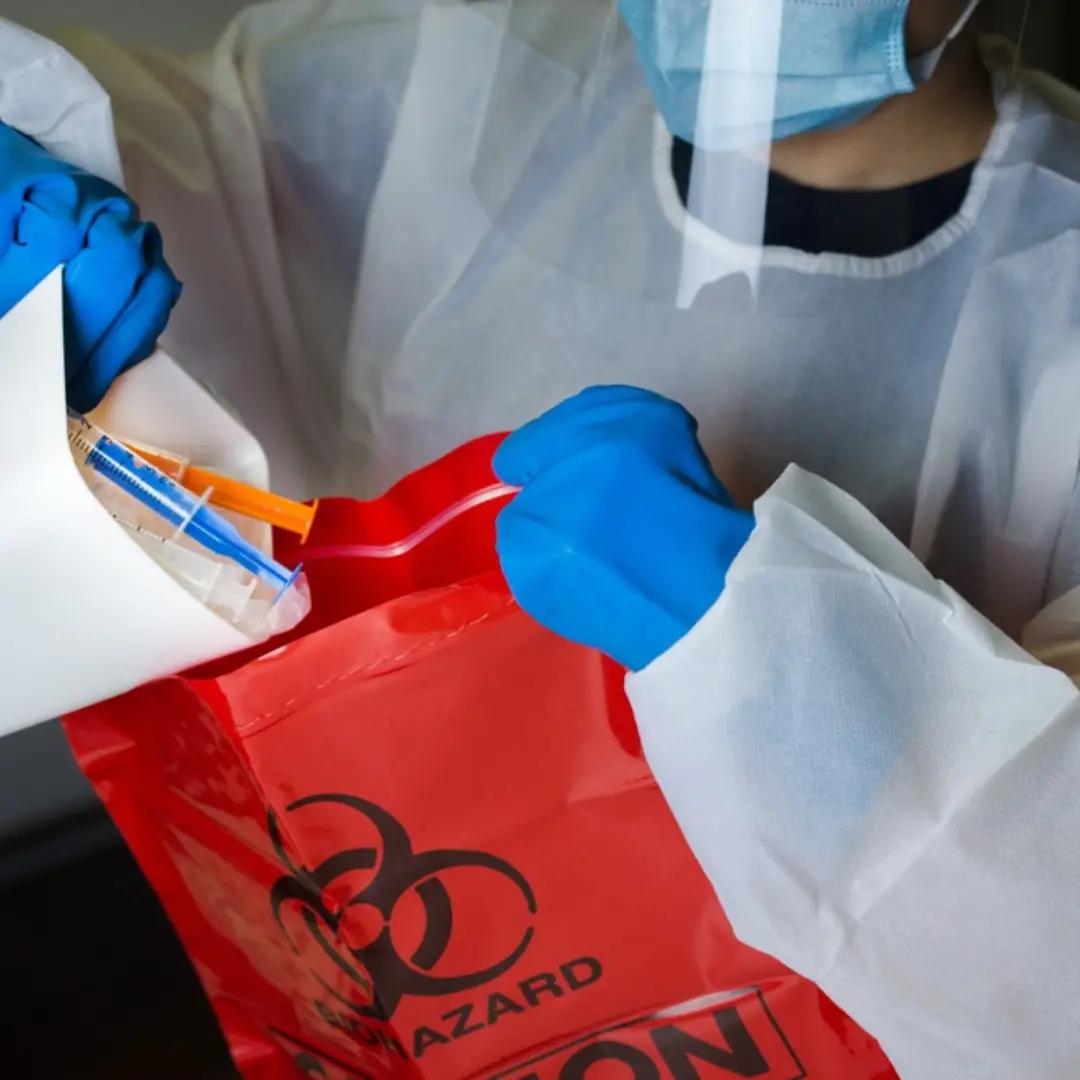In an era where healthcare advancements are at their peak, an often overlooked, yet critical, aspect is the management of pharmaceutical waste. This intricate balance of cost, compliance, and environmental responsibility is not just a mere operational challenge, but a necessity for sustainable healthcare practices. With the increasing volume of medical waste generated in the United States, the urgency to address this issue has never been more pronounced.
This article delves into the nuances of pharma waste management, aiming to provide insights and solutions for a problem that sits at the intersection of healthcare efficiency and environmental stewardship.
Understanding the scope of medical waste disposal
Pharmaceutical waste encompasses a wide range of materials discarded from healthcare facilities, including expired drugs, contaminated packaging, and used medical supplies. Managing this waste efficiently is critical for both environmental protection and public health safety. The Environmental Protection Agency (EPA) and the Occupational Safety and Health Administration (OSHA) have set stringent guidelines to ensure the safe disposal of medical waste. However, compliance with these regulations often comes with a significant cost, posing a challenge for healthcare providers who are already grappling with tight budgets.
The financial implications of adhering to medical waste disposal guidelines are substantial. Healthcare facilities must invest in proper waste segregation systems, disposal methods, and staff training to ensure compliance. This investment is crucial to avoid hefty fines and legal repercussions associated with non-compliance. However, the high costs can be a deterrent for smaller clinics and hospitals, leading to improper waste management practices that could have severe environmental and health repercussions.
Improper disposal of pharmaceutical waste can lead to severe environmental damage. Chemicals and toxins can leach into the soil and water systems, causing pollution and harm to wildlife. Moreover, the incineration of medical waste, a common disposal method, contributes to air pollution and the release of harmful greenhouse gases. The challenge lies in finding disposal methods that are not only compliant with regulations, but also environmentally friendly.
Advancements in technology have introduced new methods for managing pharmaceutical waste that are both cost-effective and environmentally sustainable. These innovations include more efficient waste segregation systems, biodegradable packaging, and alternative disposal methods that reduce the environmental impact. By investing in these technologies, healthcare facilities can reduce their operational costs in the long run, while contributing to a healthier planet.
Regulatory landscape and pharma waste management
Navigating the complex regulatory landscape is a critical component of effective pharma waste management. In the United States, several federal agencies, including the EPA, the Drug Enforcement Administration (DEA), and the Food and Drug Administration (FDA), have laid down guidelines that govern the disposal of pharmaceutical waste. These regulations are not just a mere formality, but serve as the backbone of environmental protection and public safety. Understanding these regulations is crucial for healthcare facilities to ensure that their waste disposal practices are not only legally compliant, but also ethically responsible.
Non-compliance with medical waste disposal regulations can have far-reaching consequences. Facilities risk facing legal actions, hefty fines, and damage to their reputation. Moreover, non-compliance poses a direct threat to public health and safety, potentially leading to contamination of water sources and exposure to hazardous substances. Healthcare facilities must prioritise adherence to these regulations to avoid these risks and uphold their duty of care.
Effective waste segregation is the cornerstone of compliant pharma waste management. This involves categorising waste into various streams, such as sharps, chemical waste, and general medical waste, each requiring different disposal methods. Implementing best practices in waste segregation not only ensures compliance, but also optimises the disposal process, potentially reducing costs. Moreover, training healthcare staff in proper waste management practices is crucial for maintaining a high standard of safety and compliance.
Balancing cost and sustainability in pharma waste disposal
Cost management is a significant challenge in pharma waste disposal, especially for smaller healthcare facilities with limited budgets. Balancing the expenses associated with compliant and sustainable disposal methods against financial constraints is a tightrope walk. However, there are strategies that facilities can adopt to manage these costs effectively.
Investing in cost-effective waste management solutions can lead to significant long-term savings. This may include adopting more efficient waste segregation systems, using reusable containers for certain waste types, and partnering with waste management companies that offer competitive pricing. Moreover, minimising waste generation through efficient inventory management and reducing unnecessary usage of medical supplies can also contribute to cost savings.
Sustainability in pharma waste disposal is not just an environmental consideration, but also a cost-saving strategy. Sustainable disposal methods such as autoclaving, recycling, and the use of eco-friendly incineration techniques can reduce the environmental impact of waste disposal. By embracing these sustainable practices, healthcare facilities can play a pivotal role in promoting environmental stewardship, while managing their operational costs.
The future of pharma waste management
As we look towards the future, the field of pharma waste management is poised for significant evolution. Emerging technologies, shifting regulatory landscapes, and increasing environmental awareness are shaping the way healthcare facilities approach waste disposal.
Innovation in technology plays a pivotal role in that future. Developments such as AI-driven waste categorisation systems, advanced chemical treatment methods, and blockchain for tracking waste disposal processes are on the horizon. These technologies promise to enhance efficiency, reduce human error in waste segregation, and ensure transparent and compliant disposal practices.
Regulatory frameworks governing medical waste disposal are also continually evolving in response to new challenges and scientific insights: anticipating and adapting to these changes is crucial for healthcare facilities. This includes staying informed about new regulations, investing in ongoing staff training, and actively participating in policy discussions. By being proactive in regulatory compliance, healthcare providers can ensure they are not only following the law, but also contributing to its evolution.
Balancing cost, compliance, and environmental responsibility requires a multifaceted approach involving technological innovation, adherence to regulations, and sustainable practices. As we navigate the challenges and opportunities in this field, the role of healthcare facilities is not just to manage waste, but to lead the way in responsible and sustainable waste disposal.
The management of pharmaceutical waste is not just the responsibility of healthcare providers, but a collective duty shared by all stakeholders, including regulatory bodies, waste management companies, and the public. By working together, we can ensure that our healthcare system not only heals, but also protects our environment and communities for generations to come.
This post, Pharma Waste Management: Balancing Cost, Compliance, was first published by pharmaphorum on January 22, 2024.











